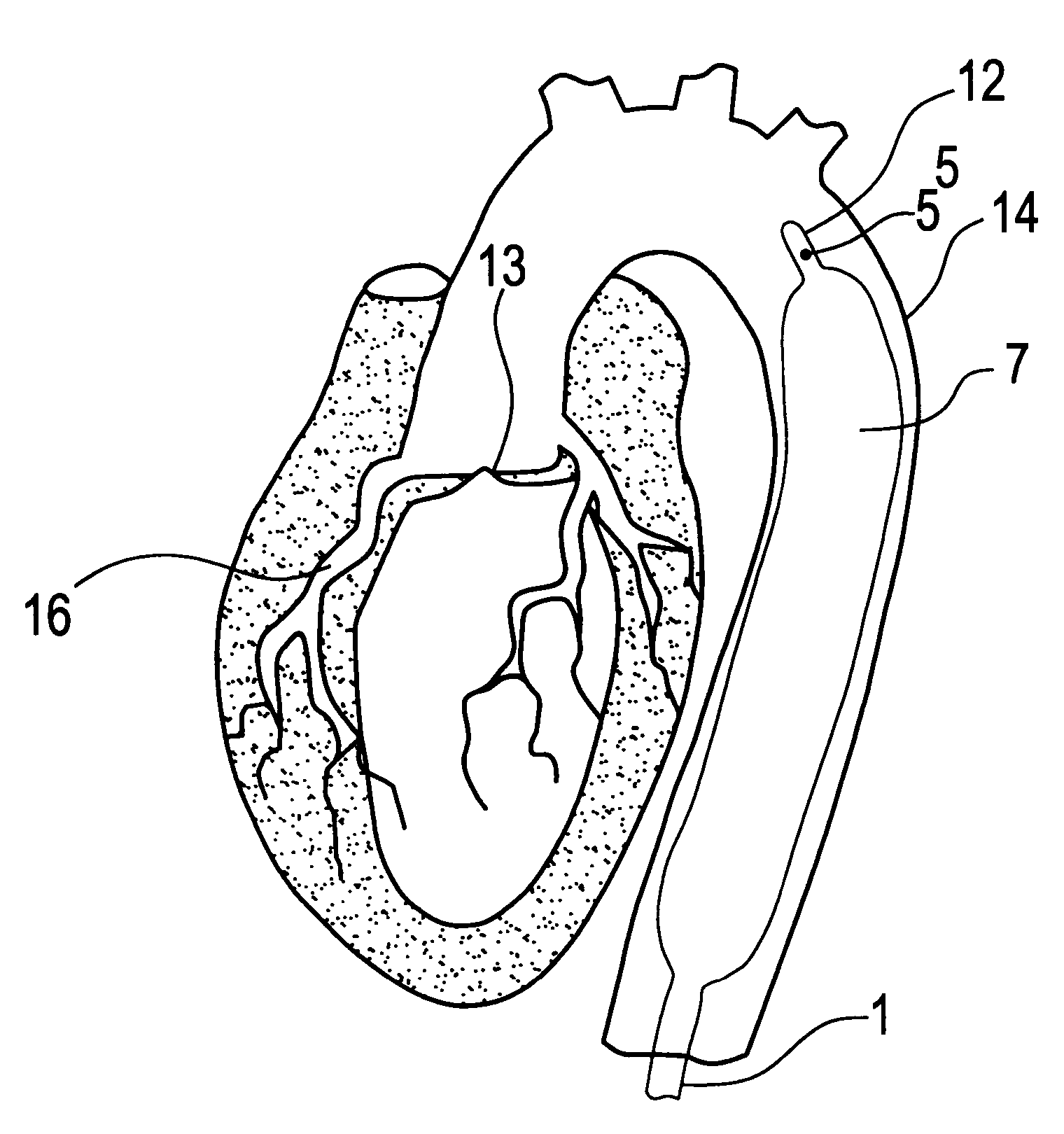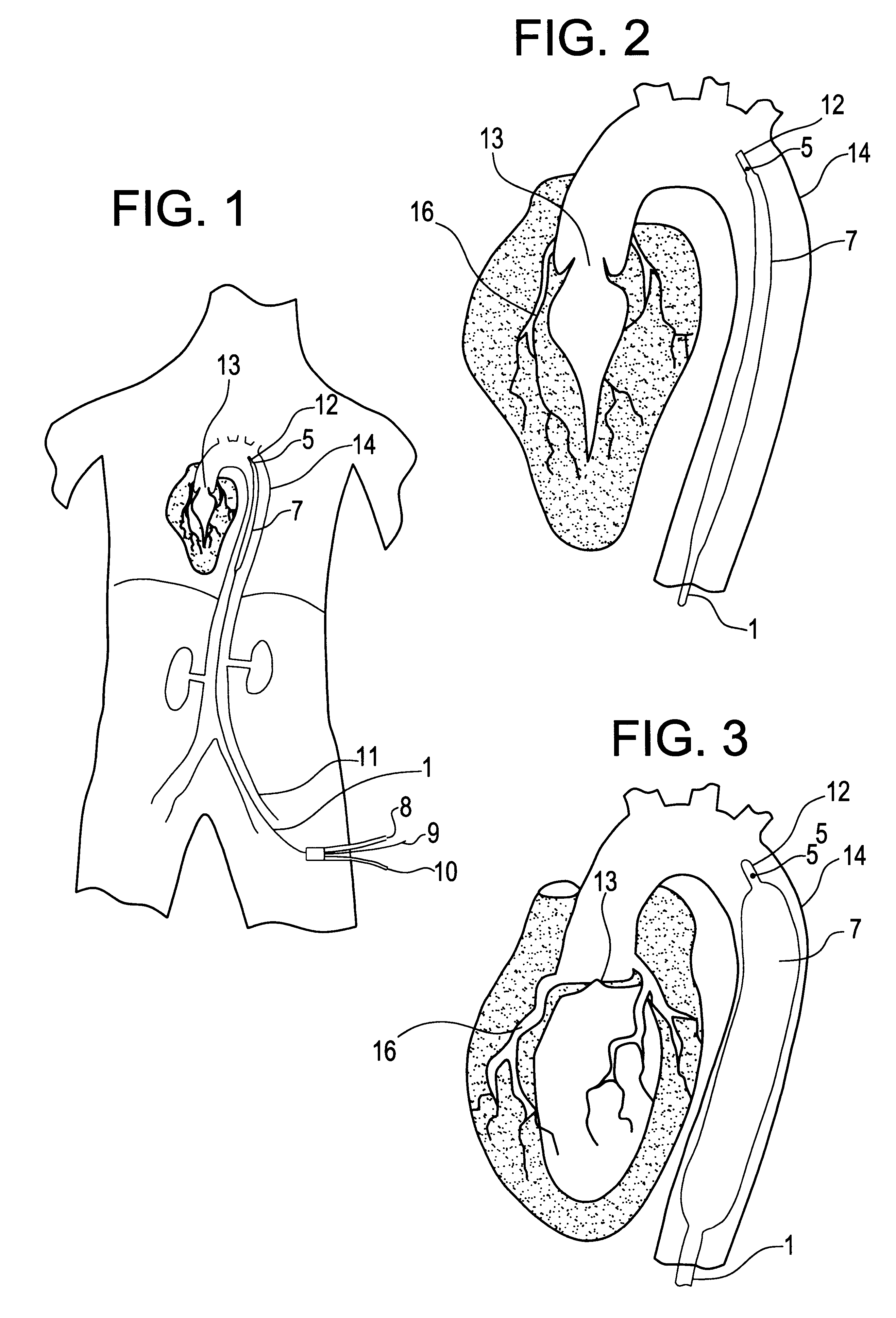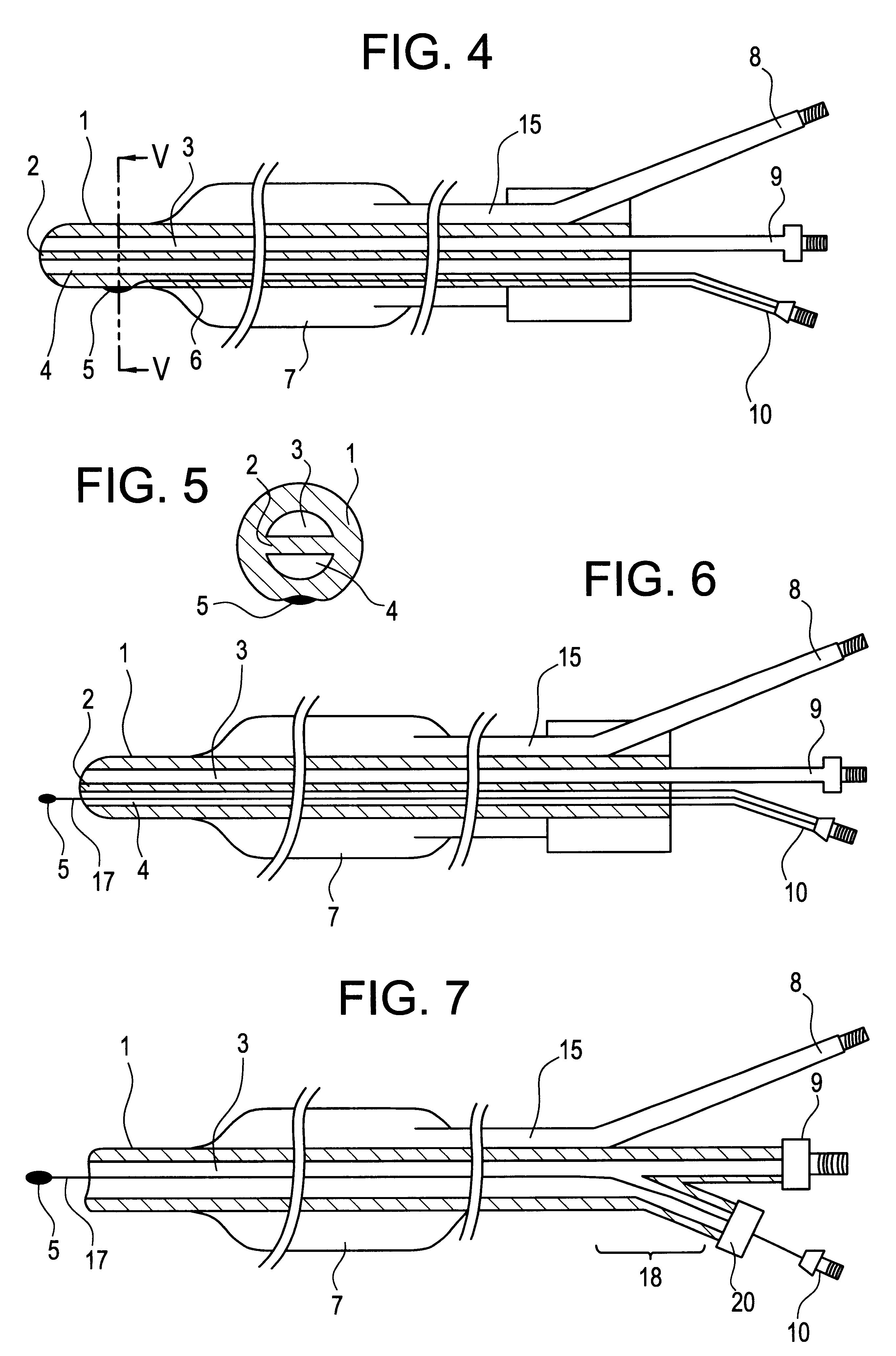Combined catheter system for IABP and determination of thermodilution cardiac output
a combined catheter and cardiac output technology, applied in the field of intraaortic balloon catheter system, can solve the problems of significant complications, increased strain and risk of further complications for critically ill patients, and reduced mortality of patients
- Summary
- Abstract
- Description
- Claims
- Application Information
AI Technical Summary
Benefits of technology
Problems solved by technology
Method used
Image
Examples
Embodiment Construction
:
In FIG. 1 the catheter body 1 has been introduced percutaneously into the femoral artery 11 over a guidewire and has been advanced through the vasculature into the aorta 14 until the distal tip 12 of the catheter body 1 is positioned just below the subclavian artery. Once in position a balloon pump (not shown) is connected to connector 8 to operate the balloon 7 synchronously with the patient's heart beat. In particular, the balloon 7 can be inflated and deflated to assist blood circulation especially into the coronar arteries. Inflation of the balloon occurs as the aortic valve 13 is closing and deflation occurs just prior to the onset of systole. At the proximal end of the catheter body there is provided a Luer-Lock connector 9 to connect an inner lumen of the catheter body 1 to a blood pressure monitor (not shown).
Close to the distal tip 12 of the catheter body 1 there is provided a thermistor 5 which permits monitoring of the blood temperature of the blood flowing in the aorta ...
PUM
 Login to View More
Login to View More Abstract
Description
Claims
Application Information
 Login to View More
Login to View More - R&D
- Intellectual Property
- Life Sciences
- Materials
- Tech Scout
- Unparalleled Data Quality
- Higher Quality Content
- 60% Fewer Hallucinations
Browse by: Latest US Patents, China's latest patents, Technical Efficacy Thesaurus, Application Domain, Technology Topic, Popular Technical Reports.
© 2025 PatSnap. All rights reserved.Legal|Privacy policy|Modern Slavery Act Transparency Statement|Sitemap|About US| Contact US: help@patsnap.com



